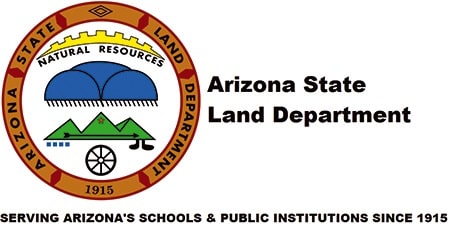About cookies on this site Our websites require some cookies to function properly (required). In addition, other cookies may be used with your consent to analyze site usage, improve the user experience and for advertising. For more information, please review your options. By visiting our website, you agree to our processing of information as described in IBM’sprivacy statement. To provide a smooth navigation, your cookie preferences will be shared across the IBM web domains listed here.
Arizona State Land Department generates revenue for the state’s education services—yet sluggish information access threatened to drag efficiency downwards. By upgrading the storage technology underpinning its virtual desktop solutions, the department slashed response times and helps teams work more productively at the office and in the field.
The Arizona State Land Department generates vital funds for public schools by managing millions of real estate acres. How could it give staff faster access to the data they need to work efficiently?
To boost performance and enable mobile access to business-critical data and tools, the department deployed VersaStack from IBM and Cisco, including IBM® FlashSystem® 9000 and IBM Storwize® V3700.
Results
storage performance reduces virtual desktop boot times by more than 86%
access to applications increases productivity
raise greater revenue for public schools to fund new education projects
On the road to ultra-efficient land management
The Arizona State Land Department oversees an incredibly diverse range of State Trust lands—from deserts and grasslands to mountains and forests. To manage it all efficiently, the department’s employees rely on a vast array of tools, including computer-aided drafting (CAD) software for land mapping, geographic information system (GIS) applications, satellite imagery and a comprehensive suite of applications running on Oracle WebLogic Server, Oracle Fusion Middleware and Oracle Database 11g. The organization also uses Oracle BI Publisher for business reporting.
These tools generate vast amounts of information, including very large and complex graphical datasets. The Arizona State Land Department must ensure that this data is managed effectively and made readily available to the employees who need it so that they can work productively.
The department relies on a virtual desktop infrastructure (VDI) to deliver these tools to employees. To ensure fast, reliable access to applications and information, it is essential for the department to guarantee the highest levels of availability and performance for the infrastructure underpinning its VDI environments.
Bill Reed, Chief Technology Officer at the Arizona State Land Department, states, “Providing our staff with best-in-class technology is paramount to us, as it is precisely through sophisticated software tools that the department carries out its daily activities, which ultimately support our state’s public education system.
“Our employees required higher levels of speed and performance, and easier, on-the-go access to enterprise applications, but the existing storage technology supporting the VDI environments was simply not up to the challenge. For example, slow response times meant that it was not feasible for us to provide mobile application access, which limited the work that employees were able to perform in the field, dulling productivity.
“Similarly, sluggish storage performance resulted in long boot times for virtual machines; it sometimes took up to 15 minutes for users to boot up a virtual machine, causing frustration across the organization.”
If the department wanted to empower its employees—from junior staff to land managers—with the tools to perform their tasks more productively and make smarter decisions for the beneficiaries of State Trust lands—especially public schools—it knew that a technology refresh was required.
Lightning-fast access anytime, anywhere
The Arizona State Land Department began reviewing the latest storage technologies available on the market. Bill Reed explains, “The solution we had in mind needed to accelerate access to data, enable on-the-field access via mobile devices, and be cognitive-ready.
"After exhaustive, comparative proof of concept testing in which we built multiple varieties and configurations of virtual machines to test speed and performance, we chose IBM FlashSystem V9000 with Cisco Nexus 9000 switches, MDS switches and UCS servers.
“Besides offering the storage technology that was best suited to our requirements, IBM is also a world-class business partner—and one with whom we’ve had a long, solid relationship now. Choosing to work with IBM on this complex project was simply the right choice. We also received great support from IBM’s partner, QCM Technologies. Their executive and technical staff demonstrated expert knowledge and experience on IBM products and services throughout the project.”
The department deployed a single FlashSystem array as the primary low-latency storage environment for its VDI. The new platform delivers the speed, agility and efficiency that the department was seeking, enabling it to provide IT services as rapidly as staff across various business units need them.
To round out the environment, the department also implemented IBM Storwize V3700 for additional storage capacity, another crucial requirement to support the advanced, sophisticated graphic applications used by the organization.
“The IBM solution allowed us to give our employees full, always-on access to their VDIs anywhere and at any time,” comments Bill Reed. “A member of the staff could be in the field doing an inspection or in one of our five remote offices, and still be able to rapidly access his or her virtual machine through a mobile device, carrying out tasks efficiently and securely.”
The combination of IBM and Cisco technologies chosen by the Arizona State Land Department was subsequently validated as a VersaStack solution. VersaStack is an integrated infrastructure concept from Cisco and IBM, combining Cisco UCS Integrated Infrastructure, which includes server, networking and software components, with IBM Storwize storage systems for a best-of-breed platform for business solutions.
“We had chosen the Cisco UCS servers and Nexus switches as the optimal solutions to go with our FlashSystem and Storwize technologies,” comments Bill Reed. “Seeing our chosen configuration become an official Cisco Validated Design VersaStack solution has been great for two reasons. First, it recognizes the great work we did in our benchmarking and selection processes, and second, it means that we enjoy fully integrated support from IBM and Cisco.”
He adds: “This project represents a paradigm shift in the way we approach IT service provision. Our converged, virtualized VersaStack solution with IBM FlashSystem V9000 has made us nimble, efficient, and able to respond quickly to service requests. It has also simplified our IT infrastructure and accelerated both Oracle and GIS application development and performance. As a result, we can rapidly deploy new IT services wherever and whenever business units need them.”
Boosting staff’s productivity, making pupils happier
Today, the Arizona State Land Department is empowering its employees with fast, reliable access to the leading-edge tools that they need to perform their daily operations effectively.
With virtual desktops now supported by powerful IBM storage solutions, the department’s users benefit from better performance and significant productivity gains. For instance, staff can load GIS maps with multiple layers instantly, enabling them to carry out geographic information mapping tasks quickly and efficiently. This ultimately, helps them make timelier, more informed decisions on the management of over 9 million acres of State Trust lands, especially in connection with the administration of lands for public schools.
Bill Reed confirms, “The success of the new platform—especially its on-the-go, mobile-readiness feature—is easily measurable through the increase in user acceptance, which has been truly overwhelming. Not only has the IBM solution helped us to deliver a vital boost to employee satisfaction and productivity, it is also significantly easier to manage and this has enabled us to lower the cost of IT support.”
Querying large sets of spatial and non-spatial data puts a heavy strain on the Oracle applications used by the Arizona State Land Department. Some analyses would previously take 15 to 20 minutes to run. With IBM FlashSystem in place, access to data is so much faster that these jobs now run almost instantaneously. “The new solution is so fast and performs so efficiently that, at the beginning, our staff would call us up saying that the platform was not working,” says Bill Reed. “Because the performance was instantaneous, they thought that the system was broken—when we assured them that the solution was simply a lot faster, they were absolutely stunned. Across the board, users are reporting that Oracle is running orders of magnitude faster on the FlashSystem and VersaStack infrastructure.”
By virtualizing its storage, compute, and network infrastructure on VersaStack from IBM and Cisco, the Arizona State Land Department was able to pack more virtual machines on fewer physical servers, realizing a gain of 60 to 70 percent in server utilization efficiency. Bill Reed says: “Higher server utilization translates directly into lower costs for hardware, maintenance contracts, cooling and power consumption. Through this approach, we have experienced substantial cost savings, increased flexibility, and a significantly higher level of system performance.”
Using FlashSystem V9000, the department also reduced virtual machine boot times in the VDI landscape by more than 86 percent, from 15 minutes to two minutes: a huge decrease which positively impacted user’s satisfaction and the organization’s profitability. The organization can also now support secure user access from any device that has internet access, enabling a BYOD policy that is popular with employees and that boosts their productivity. Employees can freely log in from any device, for example enabling them to display their virtual desktop on a projector in a meeting room.
The new architecture also eliminates the need to maintain costly LANs in regional offices, and keeps all data securely stored and managed in the headquarters, where it is also protected from power outages. In the event of a local power outage, users lose no work and can simply pick up where they left off when power is restored—because their session continues to run on the UPS-protected central infrastructure.
Bill Reed concludes, “For us, more productive employees translate to happier pupils and a better education environment. With IBM, we achieved both, and are looking forward to reaping even more benefits in future projects with cognitive analytics supported by IBM storage solutions.”
The Arizona State Land Department (link resides outside of ibm.com) manages approximately 9.2 million acres of land within the US state of Arizona. The land belongs to a public trust created to support the state's public education system. The department manages the lands and resources to enhance their value and optimize economic returns for trust beneficiaries.
Legal
© Copyright IBM Corporation 2016. IBM Systems, Route 100, Somers, NY 10589.
Produced in the United States of America, October 2016.
IBM, the IBM logo, ibm.com, FlashSystem, and Storwize are trademarks of International Business Machines Corp., registered in many jurisdictions worldwide. Other product and service names might be trademarks of IBM or other companies. A current list of IBM trademarks is available on the web at “Copyright and trademark information” at ibm.com/legal/copytrade.shtml.
This document is current as of the initial date of publication and may be changed by IBM at any time. Not all offerings are available in every country in which IBM operates. The performance data and client examples cited are presented for illustrative purposes only. Actual performance results may vary depending on specific configurations and operating conditions. THE INFORMATION IN THIS DOCUMENT IS PROVIDED “AS IS” WITHOUT ANY WARRANTY, EXPRESS OR IMPLIED, INCLUDING WITHOUT ANY WARRANTIES OF MERCHANTABILITY, FITNESS FOR A PARTICULAR PURPOSE AND ANY WARRANTY OR CONDITION OF NON-INFRINGEMENT. IBM products are warranted according to the terms and conditions of the agreements under which they are provided.

